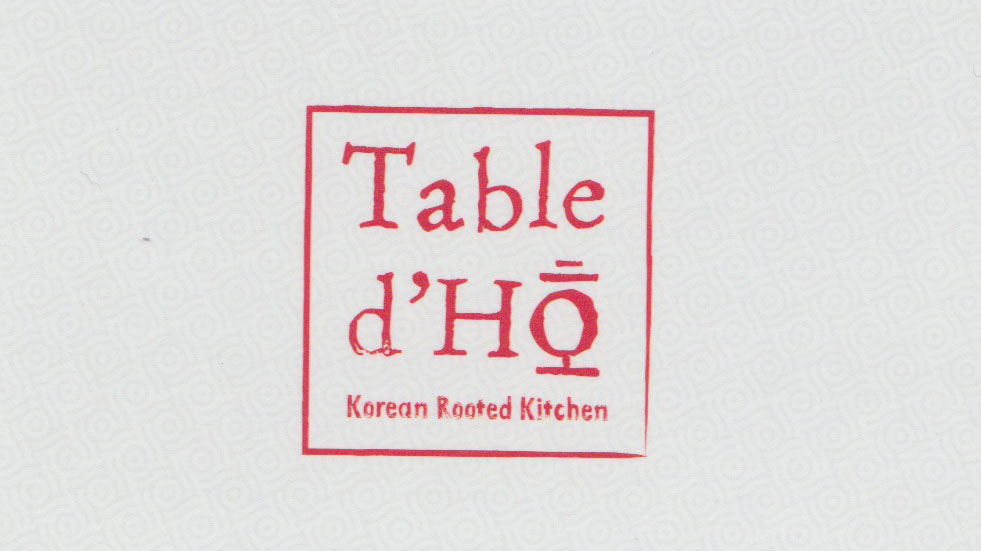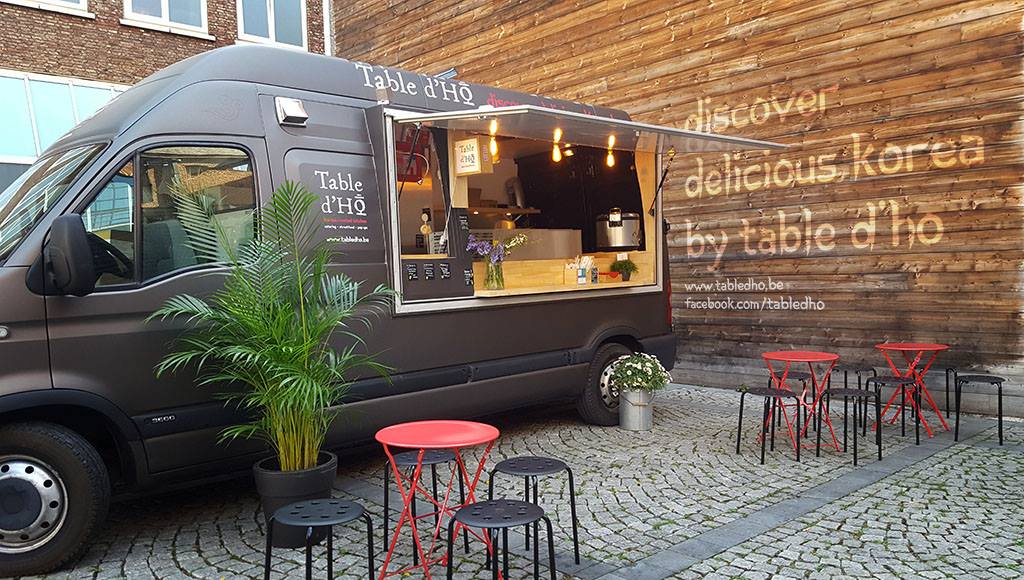A bilingual, biscriptal pun in Belgium
« previous post | next post »
Alex Baumans sent in this photograph of the logo of a Korean food truck in Belgium, run by one San-Ho Park Correwyn:
The truck also has its own Facebook page.
The owner cleverly inserted the "Ho" element of his name in Hangul (호) and made a pun on "table d'hôte". As can be seen here (second page of slideshow), the Hangul version of his name is 박 산호.
Other recent posts on multiscriptalism include:
- "A bilingual, biscriptal product designation in Taiwan" (2/7/14)
- "A trilingual, triscriptal ad in the Taipei subway" (1/20/14)
- "Biscriptal juxtaposition in Chinese" (8/17/14)
- "Biscriptal juxtaposition in Chinese, part 2" (10/15/14)
- "More biscriptal examples from Israel" (12/12/16)
- "Apostrophe in Hebrew" (11/22/16)


Cervantes said,
December 14, 2016 @ 4:43 pm
Very pretty.
Thomas Rees said,
December 14, 2016 @ 11:50 pm
The truck lives at Kortenberg, in Vlaams-Brabant, so its mother tongue is Dutch!
David Marjanović said,
December 15, 2016 @ 6:58 am
Beautiful. :-) It's only surpassed by the phở place I've seen whose ở was rendered as a cup with a handle and steam rising from it.
Victor Mair said,
December 15, 2016 @ 8:26 am
Esthetically, this is one of my favorite posts, and I'm glad that others agree with me.
Ginger Yellow said,
December 15, 2016 @ 9:23 am
The overall signage is trilingual. Which I guess isn't too unusual in Belgium.
Jonathan said,
December 15, 2016 @ 11:08 am
Is English the language of food trucks, like Italian is the language of music?
I'm asking because the logo says "Korean Rooted Kitchen" (if I'm reading that second word correctly), and the Facebook page included ads saying "popup diner", which is an awful lot of English to sell Korean food to Belgians.
(Also agreeing that it's a very nice design.)
Jarek Weckwerth said,
December 15, 2016 @ 5:12 pm
@Jonathan an awful lot of English to sell Korean food to Belgians
If you have access to the Journal of Sociolinguistics, there was an article in the recent "Festschrift for Labov" issue precisely about the use of English in commercial signage in Amsterdam vs. Brussels. Fascinating stuff, even if largely predictable. If Thomas Rees is right about the truck's place of abode, then maybe it makes it more Amsterdams (in a sense), i.e. Quite a Lot of English Everywhere. Dutch English, of course. For example, I'm quite sceptical (as a non-native, granted) about the by in the sign on the wall (or is it just a render on the fb page?). Smells of bij or chez. I would prefer at, or maybe even from or something. Correct?
The reference: Vandenbroucke, M. 2016. Socio-economic stratification of English in globalized landscapes: A market-oriented perspective. Journal of Sociolinguistics 20. 86-108.
Jongseong Park said,
December 15, 2016 @ 6:10 pm
I'm not sure if it's the type designer in me or just being a native reader of Korean, but I thought it was rather ill-proportioned at first sight, so it was weird to see so many people commenting on how pretty it was. I guess familiarity makes the difference, with the more exacting standards of beauty that come with it. I would like to decrease the size of the circular part of ô/ㅎ and centre it with respect to the elements above and below; right now, the circle looks too big compared to both the Latin letters 'd'H' and the rest of the Korean syllable 호. I would also de-emphasize the stroke weight variation of the circle as right now it shows a distribution that is typical for a Latin letter 'o' but not a hangul 'ㅇ'. In addition, I would make the ㅗ wider, more balanced and more letter-like. I wonder what the reactions of Koreans not trained in typography will be to this design, but I would bet that many of them would also feel that the design isn't the prettiest.
I agree that it is a really clever concept, I just wish it was executed better.
Jongseong Park said,
December 15, 2016 @ 7:27 pm
Ok, here is a rough attempt at how I would improve the logo, with a different design for the ㅎ that more resembles ô.
David Morris said,
December 16, 2016 @ 5:41 am
Given that the 't' of 'hôte' is pronounced, I would have expected the logo to be 'd'H[symbol]te'. As it is, it is could be 'the table of a ho', which is completely different.
Terry Hunt said,
December 16, 2016 @ 6:29 am
@ Jonathan
Using English (which most Belgians speak/read) frees both Flemings and Wallonians from having to admit to themselves (or worse, others) that they actually do comprehend the other language. (I'm not sure how the speakers of German, Belgium's third official language, or the speakers of the other minority languages figure into this, if at all.)